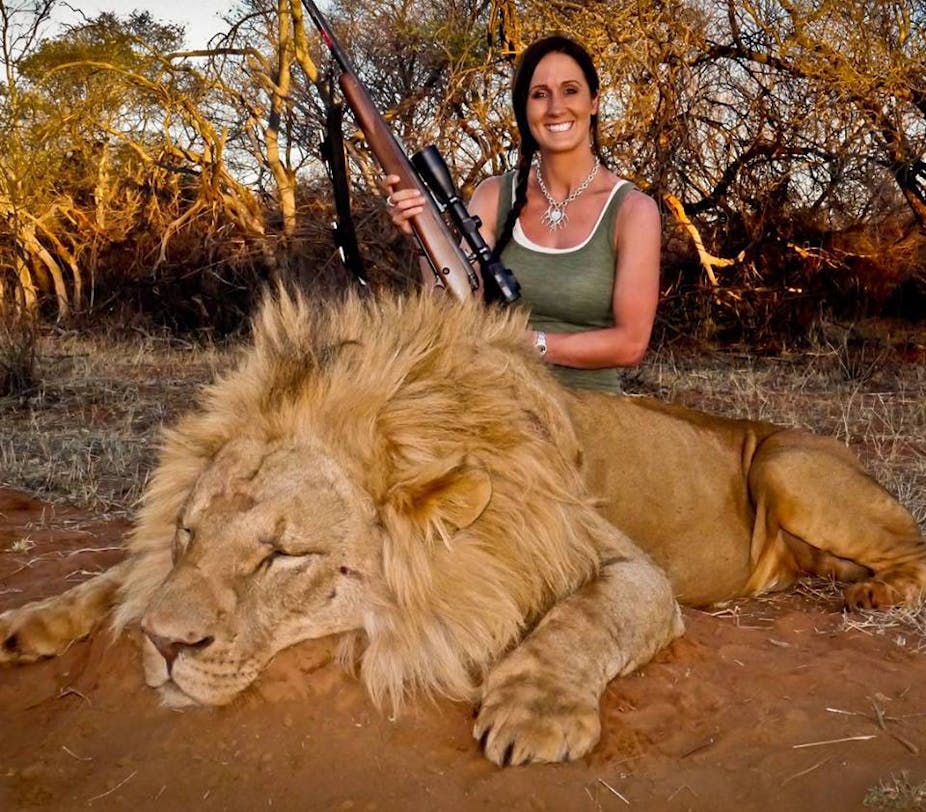There has been a huge increase in attention recently to the problem of wildlife poaching, mostly from the stream of grisly stories from Africa about rhino and elephants illegally killed for their horn and ivory. At the same time there has been a growing awareness of trophy hunting, with pictures of hunters, sometimes minor celebrities, posing next to their kill prompting furious outcry. But these two forms of wildlife are being wrongly lumped together. Despite both resulting in an animal’s death, they are entirely different.
Poaching is the illegal killing of wildlife, undertaken for reasons that may include revenge, meat for food or sale, tradition or money. Poachers might be poor locals from the area to foreigners capitalising on the lucrative illegal wildlife trade. By contrast, trophy hunting is the entirely legal killing of wildlife, often carried out by rich foreigners for sport and enjoyment. Both result in one animal fewer in the wild, but the similarity ends there.
Poaching is uncontrolled and unmonitored. With wildlife seen as a common pool resource by poachers, animals suffer from the tragedy of the (illegal) commons where poachers may feel that if they do not kill (and benefit from) that elephant, someone else will. The result is massive over-exploitation. The basic economic fact of rising prices due to high demand and low supply means that the rarer an animal gets, the higher the price. The incentive drives poachers to kill as many animals as possible.
Trophy hunting on the other hand is typically a strictly controlled, monitored and regulated business where safari game parks must apply for government-issued permits for the number of animals they wish to hunt. If animals are to be taken out of the country, further permits are needed for their transport. So we have a good idea of the number of animals trophy hunting kills worldwide, and because no business wants their income to stop, game parks tend to look after their wildlife very well, which sees population numbers increase over the years.
For comparison, take a typical livestock farmer: he wouldn’t take all his cattle to market at once as there would be none left to sell the following trip. It makes sense to only sell a few at a time, and in the meantime grow his herd in order to have more animals to take on the next trip and so more to sell. Safari game parks see their wildlife in a similar fashion and prefer to increase their game animals. In fact, time and again it has been shown that trophy hunting operations can expand wildlife populations rather than reduce them.
As they are able to legally reap the economic rewards from the wildlife they look after, the game parks have an incentive to conserve these species. And some benefits trickle down to the local community – for example creating more jobs – which means locals have an incentive not to poach wildlife illegally because now they can benefit from its value through the legal economy.
This approach has worked wonders in Namibia through the conservancy model, in which local communities living around the wildlife to be protected are put in charge of their wildlife. They are able to offer trophy hunts to tourists, and so reap the benefits. This has dramatically reduced poaching, and some trophy species populations are booming as a result.
So the call to ban trophy hunting or prevent hunters from bringing home their trophies is worrying. For example, the recent ban of ivory imports from Tanzania and Zimbabwe to the US may have a dramatically negative effect on those countries elephant populations. By taking away the opportunity for local communities to benefit from these animals the land is likely to be turned over to agriculture.
In a previous instance, Kenya stopped trophy hunting in the 1970s, and land that had previously been set aside for wildlife was converted to livestock and crop farming. The result was widespread population declines of all game species, as crops and cattle now held more value. Whether this is the result in Botswana and Zambia, where trophy hunting was recently banned, remains to be seen.
Not all forms of wildlife killing are the same, and we must be careful to ensure the differences are understood. It’s easy for Westerners to jump to conclusions about wildlife management, to see a picture of a dead lion and suppose any form of killing to be wrong. But if we take a step back and see the big picture about how these communities – isolated, poor – have to live with dangerous animals such as elephants and lions, we must understand that the picture is far more complex. Indeed, as the Namibian example has shown, carefully managed trophy hunting may be one way to reduce poaching of wildlife.

